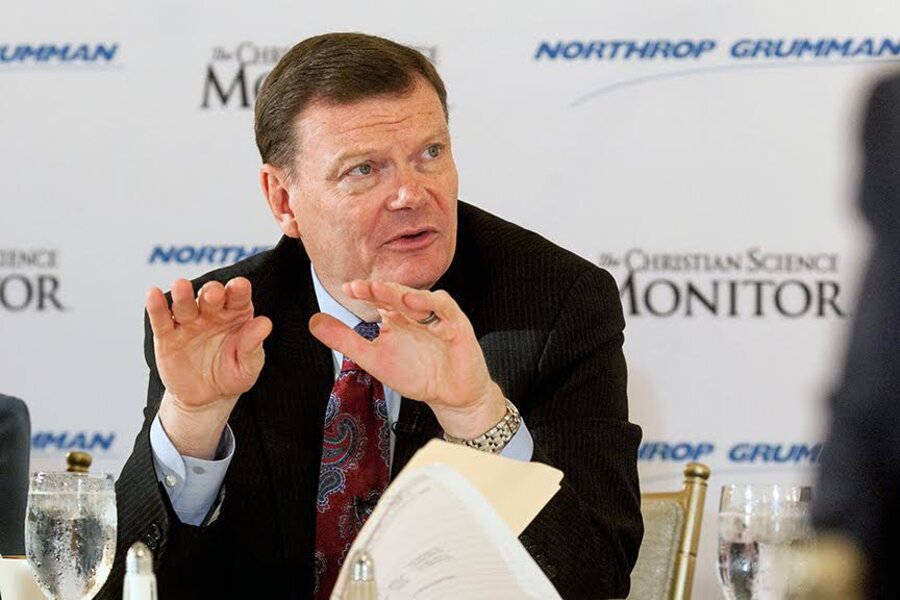Pentagon's top IT official: My money buys Silicon Valley's trust
Loading...
Money talks.
That's the message from the chief information officer of the Department of Defense, who said Thursday the allure of government contracts can overcome the trust deficit that has emerged between Silicon Valley and Washington.
"With our partners, I don't have a big trust issue. The first reason is: I spend $36.8 billion a year. That buys a lot of potential trust," Terry Halvorsen said at a breakfast hosted by The Christian Science Monitor.
As the drumbeat of data breaches on both the government and private sector continues, the Pentagon is making a push out West for new tech and talent, even going so far to set up an outpost in Silicon Valley. Mr. Halvorsen, who is charged with protecting military networks, himself has traveled to the West Coast, working to bring in new cybersecurity capabilities such as automating basic tasks, like patching software, to free up his personnel for more complicated missions.
And yet, even with the new outreach, the issue of trust between the government and tech industry has been front and center, ever since whistleblower-turned-fugitive Edward Snowden revealed two years ago the National Security Agency was collecting troves of Americans’ communications records and hacking into the Internet backbone. Exacerbating the rift this year, senior law enforcement and intelligence officials called on tech companies to build in government access into encrypted devices – a move that sparked a wave of outrage among security and tech pros. Even the US government's push to increase the sharing of cyberthreat information between the federal government and private sector was controversial, leading Obama administration officials to publicly acknowledge a need to rebuild trust with industry.
Yet Halvorsen, for his part, sees it differently.
"I do think American industry responds to DOD very well and has a very great history of doing that," Halvorsen said. "We have industry with us on the forward edge. And when we tell industry, 'Listen, we need help in getting smaller communications to this far-flung unit and we need people out there,' they deliver," he said. "When you talk to the industry, I'm talking about the workers that get this, many are happy – and grateful, even – that they can support the DOD mission."
The cyberthreats the Defense Department faces are huge, he said. "There is not a time when I'm not being attacked somewhere in the world," Halvorsen said.
However, the complex defense acquisitions system has made it tough to acquire the newest technology quickly. If the military needs a submarine, for instance, there are established avenues within the defense industrial base to get one; when it comes to buying new software, "you don't own it," Halvorsen pointed out. "So it's really critical that we partner."
The department's new outpost in Silicon Valley, the Defense Innovation Unit Experimental (DIUX), is making "some progress," Halvorsen said. The officials are out there "to learn more about how Silicon Valley does business, rather than teach Silicon Valley how DOD does its business."
And the department must make some adjustments. Some small businesses need money in a three-to-six month window – or else they will crumble, Halvorsen said. "We are generally not turning that fast," he said of the department's budget decisions and payments. "How do we make the smaller investments we have to make, faster?"
The other issue the US government and military wrestle with: recruiting talent. With as many as a million jobs in cybersecurity unfilled around the world, competition between the government and industry is stiff.
"The single best recruiting tool we have is our mission set. We frankly attract some people from industry [by saying] there's no way to stop more interesting things," Halvorsen said. "That will work for a while. But I tell you what I worry about: You get into your middle years [and a company] offers you what can be two or three times what your current salary is. We're seeing some drain right now."
Halvorsen said the department is examining legislation that would offer special pay to these skilled workers, but as with any congressional act, that may take a while. "I can't really compete very well on the pay," he said.






